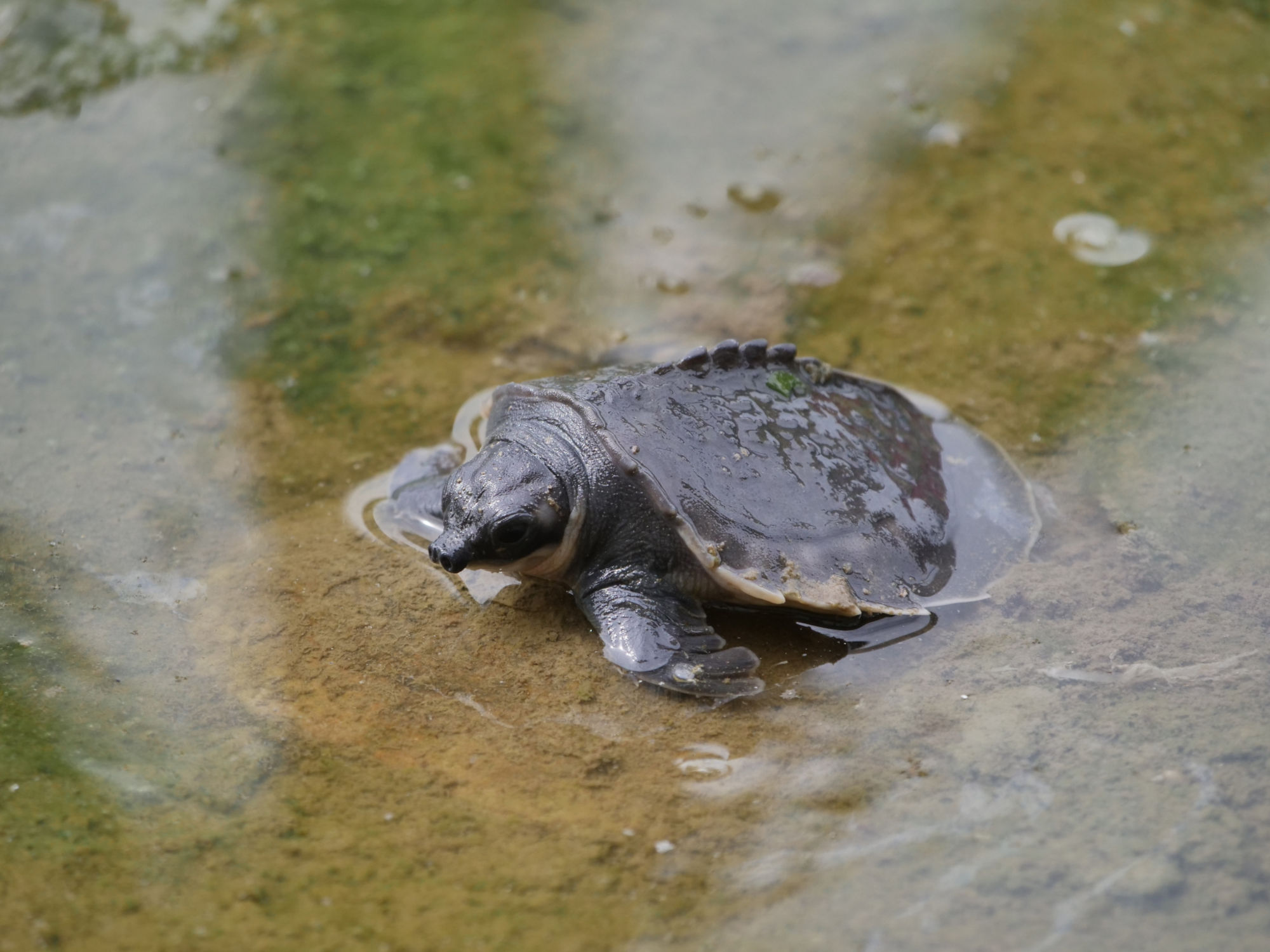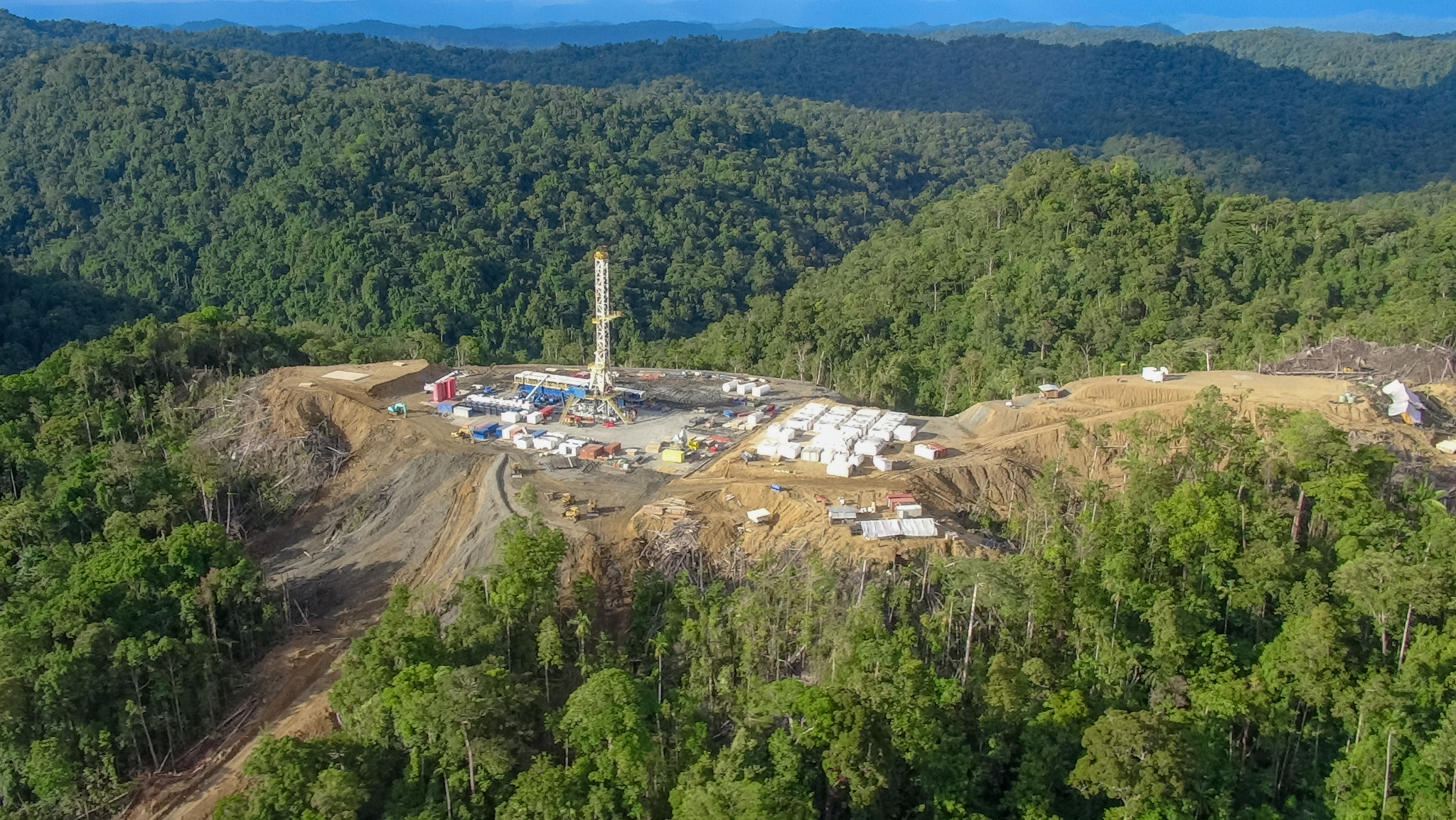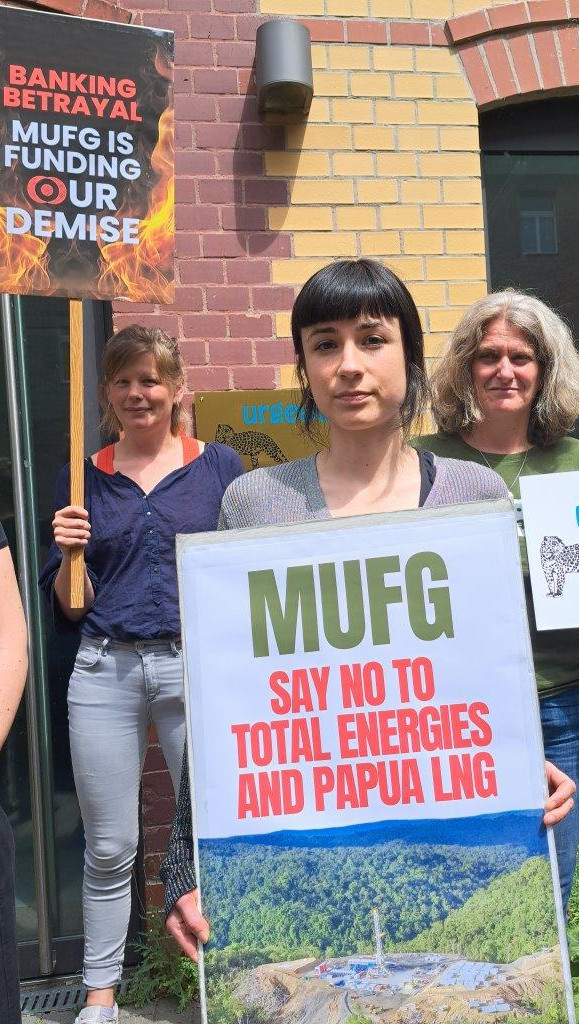Papua LNG and the Gas Gamble in Papua New Guinea
Approximate location of the Elk and Antelope gas fields.
Gas companies from four different continents have their eyes set on a new project in Papua New Guinea (PNG). TotalEnergies from France has teamed up with US major Exxon Mobil, Eneos subsidiary JX Nippon Oil & Gas Exploration from Japan, and Santos from Australia to develop the island nation’s second LNG terminal, Papua LNG.21471 PNG is one of the countries most heavily affected by climate change. The country has ample plans for renewables for its own energy needs, but fossil fuel companies are seeking to chain the PNG economy to fossil gas. Ever since development of the country’s first LNG project began, fossil gas has been tearing at the fragile social fabric of the PNG highlands. Papua LNG risks being the next chapter in a story of broken economic promises and conflict.
Note: Reputational risk projects on GOGEL are updated annually. This article was last updated November 4 2025.
Papua LNG relies on gas fields in a remote, mountainous area of PNG’s Gulf Province. The gas fields lie around 50 kilometers into the rainforest west of the banks of the Purari River, PNG’s third largest river.21472 Tugging heavy barges up the river is the fastest way for the companies to bring equipment to the project site. A 320 km pipeline through dense, tropical forest and along the mangrove-covered coastline will connect the fields to the LNG terminal. By 2028, the companies want to export the gas from a brand-new LNG facility to desirable overseas markets in Asia.2147321474 LNG is fossil gas in a liquid state. As a liquid, the gas can leave the island of New Guinea by ship. The gas companies want to construct Papua LNG near the capital Port Moresby. The location is already home to the country’s existing LNG terminal, PNG LNG.21475
Into the unknown
TotalEnergies and its partners plan to cut down more than 580 football fields of forest around the gas wells.21476 They know very little about life in the area they are entering. More than half of the plants and animals in PNG’s rainforest do not have a scientific name.21477 This includes so-called “new to formal science” species. TotalEnergies has identified 63 species in the Papua LNG project area that are either new to formal science or have not been described.21478 Other species they have registered in the area are more well-known. The reason is that these animals and plants might soon be gone forever. The critically endangered Bulmer’s fruit bat, and the threatened freshwater crocodile and pignosed turtle live close to the gas fields and the Purari River.21479 For now, the company’s main strategy to compensate for this land clearing is to plant 1,000 hectares of secondary forest in a different location.21480 However, 80% of the forest to be destroyed by the development of the Papua LNG gas fields is primary forest .21481 Secondary forest will not restore the biodiversity, hydrological value or carbon storage lost from clearing primary forests.


Economic gamble
PNG does not need fossil gas. 95% of the gas from Papua LNG is intended for export.21482 Over its lifespan, Papua LNG will release as much greenhouse gas into the atmosphere as it takes the 169 million people in Bangladesh to emit in a year.21483 While the emissions from the new fossil gas project loom on the horizon, the PNG government already has a significant focus on renewable energy. Power from sun, wind and water is cheaper and more accessible for the country’s mostly rural population.21484 It would need only a small fraction of the cost of Papua LNG to dramatically expand PNG’s energy access through new renewables by 2030. According to a 2018 study by the World Bank on energy access in the country, hydro, wind and solar power on average cost less to develop and produce than gas, coal and oil power. By far the most efficient measure is to maintain and rehabilitate existing hydro power infrastructure.21485
Still, companies are betting on fossil fuel infrastructure instead of renewable projects. As of early 2025, the Papua LNG companies do not know who will buy their gas and at what price. The project partners have not concluded a single long-term offtake agreement.21486 According to the project timeline, the terminal would export its first LNG in 2028 or later. By then, many countries currently relying on power from gas and other fossil fuels will likely have more renewable alternatives to turn to. By the same year, gas companies around the world want to bring numerous new LNG export terminals into operation.21487 This means the gas industry is facing a flooded LNG market. The price of LNG will fall and it will be more difficult for projects without long-term contracts to find buyers. At the same time, project costs for Papua LNG are soaring. In December 2024, PNG prime minister James Marape cited a 50% cost overrun.21488 The project website communicates overall costs of USD 10 billion, but the initial contract proposals from construction and engineering companies put the project at USD 18 billion.2148921490 The companies keep pushing back the Final Investment Decision (FID), presumably in hope of addressing the exploding costs.21491 Regardless of the companies’ efforts, Papua LNG will not pay off if prices are too low and demand dries up.
Even if the project companies manage to scrape together some profits from Papua LNG, people in PNG will not necessarily have a reason to celebrate. Papua New Guinea’s first LNG project, the Exxon Mobil-operated PNG LNG, has raked in profits, but the broader population has seen little of them. The PNG LNG gas comes from the Hela and Southern Highlands Provinces. The region has very high rates of violence and small-arms conflict, and there is very little information available about the current situation on the ground.21503 However, more than 10 years after PNG LNG came online, Hela province still has the worst scores in all PNG for multidimensional poverty and the Human Development Index.2149221493 In 2018, an NGO report painted an alarming picture of the effects of PNG LNG. It focused on the project area, far away from the export industry at the coast, and among others highlighted the case of Komo Hospital. The hospital was built at an inflated price by a construction company owned by a local politician, with LNG funds. Located a 30-minute drive from the gas plant in Hides, it was basically an empty shell. Despite PNG LNG starting up four years earlier, not a single patient had seen the hospital from the inside since its over-priced construction was completed. Komo Hospital had no power, no running water, not even beds.21494 In 2018, an earthquake damaged the building, and in 2025 little appears to have changed, with the provincial government having to find millions of dollars to fix the damage.21495
Economic predictions for PNG LNG were vastly overstated – with claims that the project could double PNG’s GDP.21496 A 2024 World Bank paper looking at PNG’s resource sector in general pointed out that new money has remained in the foreign-owned oil, gas and mining sectors. Even though GDP grew, people did not get better access to basic services like education, electricity or water following the resource boom from 2009.21497 In fact, 60% percent of the population did not have access to limited standard drinking water in 2018, slightly more than in 2009.21498 For Papua LNG, there appears to be no economic modelling of the costs or benefits to the PNG economy. To profit more directly, national oil company Kumul Petroleum has the right to buy a 22.5% share in Papua LNG after the project is approved. However, it is not clear if the government has the economic means to do so. The share could cost Kumul more than USD 2.9 billion.21499
All the international partners in PNG LNG, Exxon Mobil, Santos, and JX Nippon Oil & Gas Exploration, are also part of Papua LNG.21500 The current gas developments are closely intertwined with the already existing gas projects in PNG. PNG LNG is running out of gas. Papua LNG’s upstream development will not only provide gas for the Papua LNG terminal, but also for PNG LNG.21501 The PNG LNG companies have additional plans to develop a separate gas field, P’nyang, deep in the rainforest in the Western Province close to the Indonesian border.21502 The wave of interlinked extraction and infrastructure projects is pushing PNG deeper into fossil fuel dependency.

Landowners in distress
Approximately 13,000 people live in the areas affected by the Papua LNG gas extraction and pipeline, according to a study prepared for TotalEnergies in 2019. It is unlikely that all landowners have received adequate information in their first language. PNG is the most linguistically diverse country in the world. The people in the project area speak 7 different languages. Only half of them understand English and 40% are children under the age of 15.21504
The lack of transparency from the project companies raises questions about what information has or hasn’t been provided to communities. To date, there is little evidence that the companies have sufficiently informed local people about the risks and impacts of the gas project on their doorstep. This is needed to meet the standard of ‘Free, Prior and Informed Consent’ (FPIC). Free, Prior and Informed Consent is a corner stone of the United Nations Declaration on the Rights of Indigenous People, which guarantees Indigenous people a say in developments on their land.
Consent is worthless if people do not receive sufficient information before developments begin or if they are not able to speak freely. The companies have stated that the project meets the International Finance Corporation (IFC) Performance Standards.21505 However, they have not provided any examples of materials that explain to communities their rights under these standards.21506 Critical observers have hardly anything to go by. The project company has not responded to a direct request for community information materials from local NGO the Centre for Environmental Law and Community Rights (CELCOR).21507 Neither the project website nor the Environmental Impact Statement show information materials that are understandable, accessible and thorough.21508 It is also unclear how freely landowners have been able to speak at consultations. A 2019 Human Rights Impact Assessment states that the team conducting consultations traveled with security staff from TotalEnergies’ local subsidiary, TEP PNG, or with members of the reserve police stationed to work for TEP PNG. There are already signs that disputes around landownership are increasing as a consequence of uncertainties around the project.2150921510
The process of identifying the landowners affected by the project is as opaque as it is contested. As of 2025, the companies officially recognize 11 clans as principal landowners of the area within the so-called Petroleum Retention License 15 (PRL 15) where the gas fields are located.21511 It is not clear what agreements the project companies have made with landowners and which other groups have been determined. Over the past years, local government and community leaders have voiced concerns about the consultation and landowner identification processes.21512 They have called attention to a variety of problems. In 2024, the Koriki criticized that they missed out on the Landowner Beneficiary Identification Process altogether. Chiefs from the Koriki clan argued that they should be recognized as Indigenous landowners.21513 Other communities have voiced concerns about the implementation of compensation measures. In September 2023, the Elema Mai Lavi Council of Chiefs representing 600 communities along the Purari River and around the gas fields called out the project partners. They claimed that they had yet to see tangible benefits from the project. Members of their communities allegedly blocked the Purari River for two weeks in protest.21514 Families and villages rely on the 630 km long river and surrounding forest for subsistence agriculture and fishing.
Papua LNG risks repeating the mistakes of PNG LNG. Exxon Mobil did not adequately clarify landowner issues before starting up its project.21515 Existing conflicts intensified and new lines of friction arose. Even the landowners eligible for compensation received payments far too late or less than initially agreed upon.21516 Two years after the project started, an armed group of landowners took over and shut down the Exxon Mobil-run gas conditioning facility in Hides. They had not received their royalties. In the following year, Exxon Mobil evacuated staff after a hostage taking. In 2018, armed gunmen demanding payments from Exxon threatened to shut down the plant for good.21517
International Gas Companies, Global Resistance
Papua LNG is not only distressing landowners and environmental defenders in PNG. The project’s own financial advisor Credit Agricole decided not to finance the project in 2024.21518 Japanese MUFG has now assumed the role and is trying to rally for investors. However, 15 financial institutions have already ruled out financing to the project.21519 MUFG has been targeted by PNG NGO the Centre for Environmental Law and Community Rights (CELCOR). CELCOR is adamant in their calls for climate justice and the need to say no to the project. The protests have been echoed across Asia.21520 Asian People’s Movement on Debt and Development has spoken out against Papua LNG and said that communities in Asia want clean, sustainable energy, not fossil gas.21521 Other organizations in countries where TotalEnergies, its partner companies and potential financiers are headquartered are also spreading the unequivocal message: Papua New Guinea does not need another gas project.
Groups working on PNG gas: Centre for Environmental Law and Community Rights (CELCOR), Jubilee Australia Research Centre, Market Forces, Asian Peoples' Movement on Debt and Development, Reclaim Finance, Friends of the Earth US

Sources: